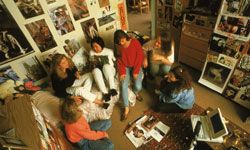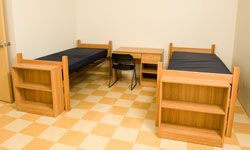College can be a culture shock for teenagers making the transition from living at home to living apart from their family, especially when the new place is in a tiny dorm room among strangers. Any college freshman accustomed to having his or her own large room at home will need to adjust to a small space and, therefore, a new lifestyle.
Your dorm room should be a comfortable haven, conducive to both studying and relaxing. For that reason, you probably don't want to feel confined by filling the room up with distractions from your books. And because college is so social, you'll also want to be hospitable to guests who drop in from down the hall.
Advertisement
What's important to understand is that effective interior design is partly psychological. Of course, you can't change the actual dimensions of your dorm room, but the right choices can make it look and feel bigger than it is. We'll go over some of the most effective ways to deal with the space you're given and make a dorm room seem as spacious as possible.


